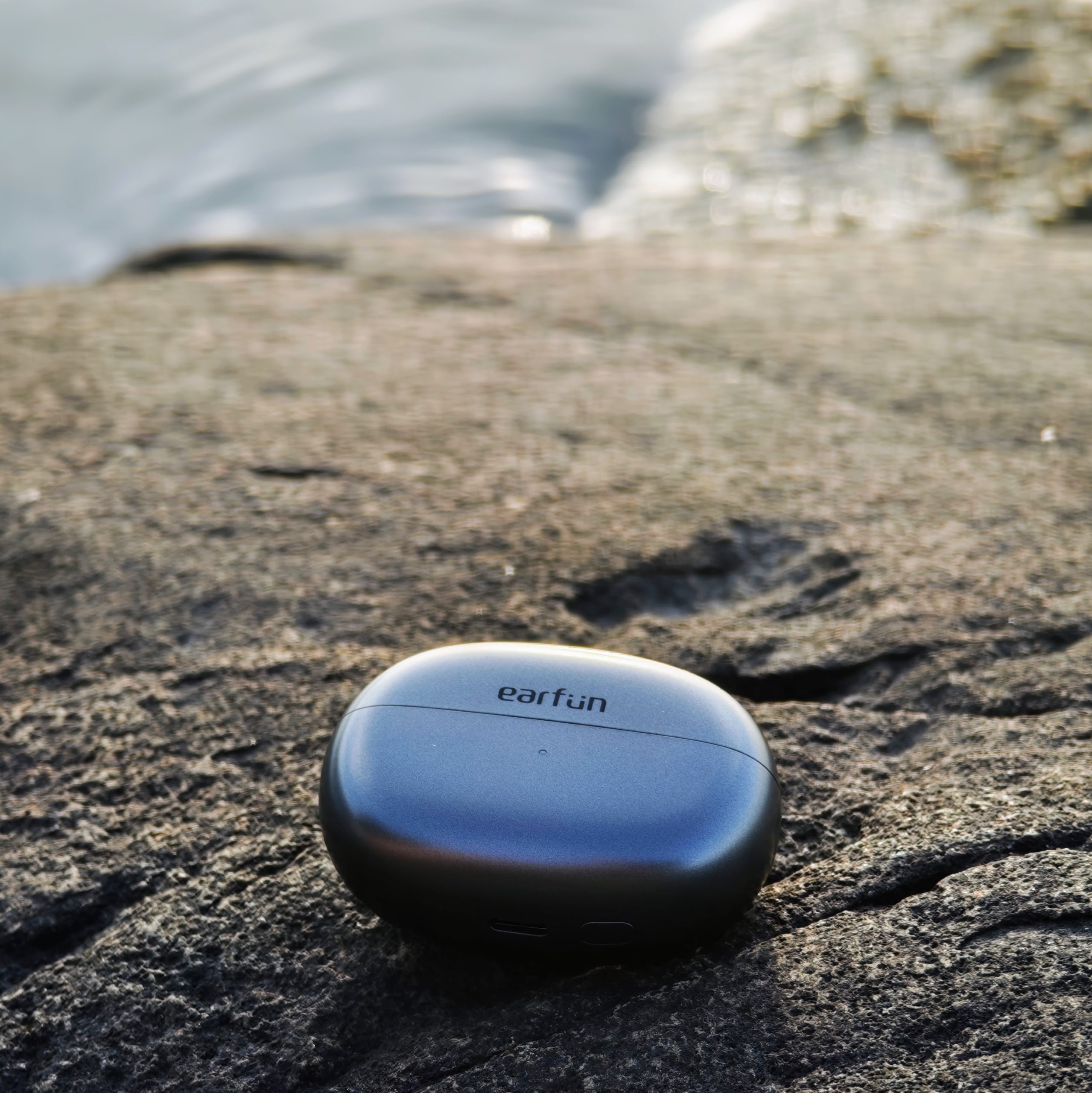TL;DR
Forget bulky earbuds! EarFun's Clip open-ear headphones offer a refreshingly light and secure fit with their unique C-Bridge design, perfect for workouts and anyone who needs to stay aware of their surroundings. They boast impressive battery life, physical buttons for easy control (especially during exercise!), and are even eyeglass-friendly. While the initial sound is a bit flat, EarFun's app unlocks customizable EQ and personalized audio profiles, transforming the listening experience. If you're looking for affordable, sweat-resistant audio that won't block out the world, these are worth a closer look. Curious about how they stack up? Dive into the full review for all the details!
In recent years, “open-ear” headphones have gained traction as a popular alternative. This design, which allows the ear canal to remain unobstructed, is ideally suited for users who prioritize environmental awareness during activities such as cycling, jogging, or simply prefer not to be completely isolated. This contrasts directly with the experience offered by noise-cancelling headphones.
We have previously evaluated several models in this category, including the Shokz Open Fit 2 +, Shokz Open Fit, Shokz Open Fit Air, and Huawei FreeArc.
Now, we turn our attention to EarFun’s offering: the EarFun Clip. EarFun is a manufacturer recognized for delivering headphones that offer a compelling balance of affordability and impressive battery performance. Prior reviews include the Air Pro 4 and Tune Pro.
This review assesses the EarFun Clip’s performance relative to its competitors and identifies its unique selling points.
Design and fit
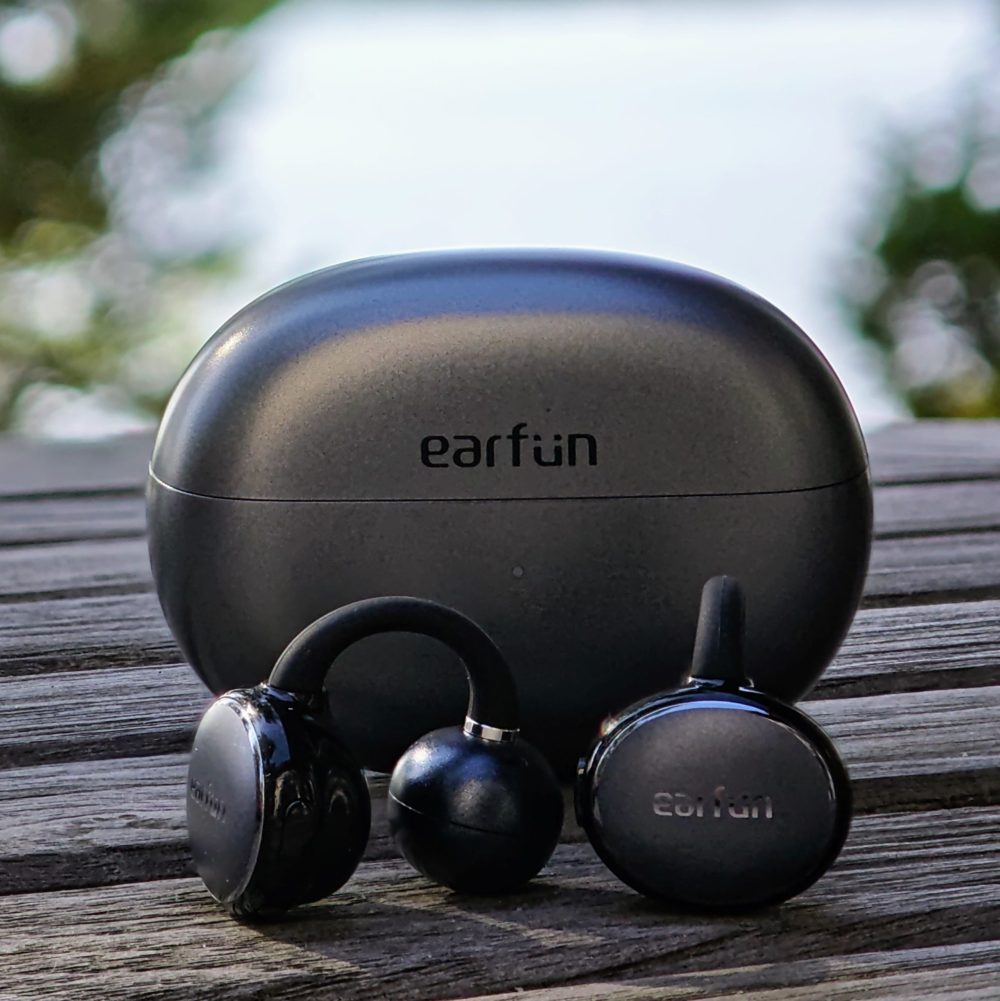
EarFun’s design for the Clip diverges slightly from the conventional open-ear headphone. Rather than employing an over-ear hook, these headphones utilize a “clip” mechanism for securing them in place.
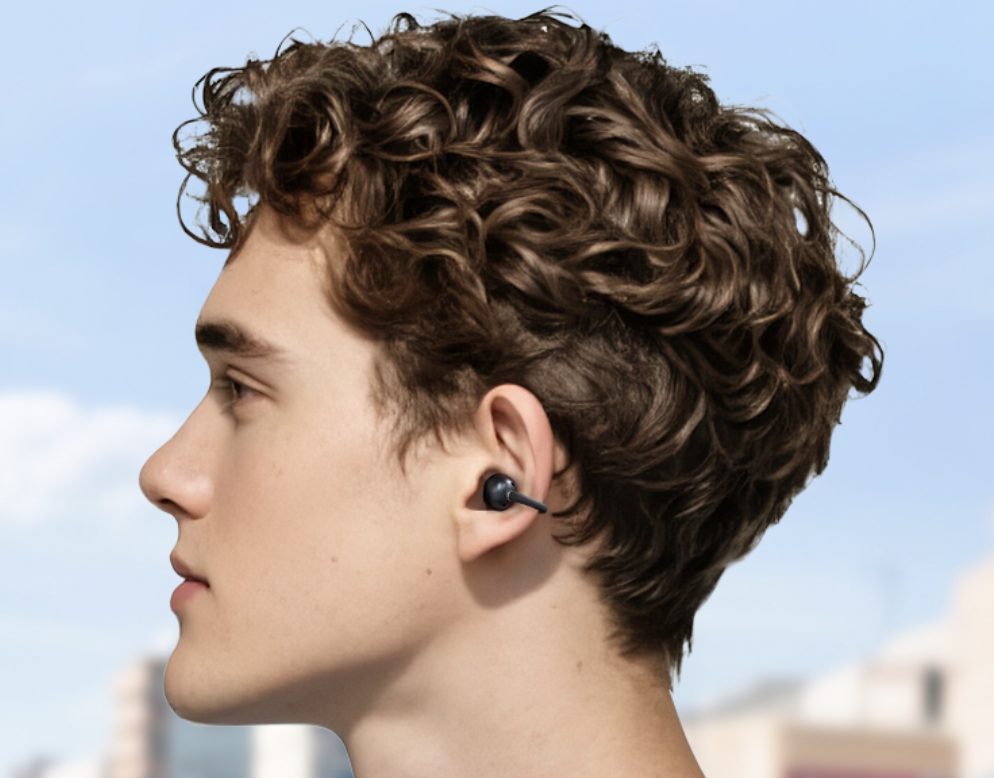
The immediate impression when wearing the EarFun Clip is their remarkably light weight. Each earpiece weighs a mere 5.7 grams, with the weight distributed effectively between the battery housing behind the ear and the speaker unit. EarFun refers to this design as “C-Bridge,” characterized by a flexible bar composed of a nickel-titanium alloy encased in silicone.
The headphones exhibit a secure fit, remaining stable even during vigorous movement. However, the non-adjustable bar presents a potential drawback. While the fit is generally suitable for most users, particularly those with smaller ears, individuals with larger ears may encounter discomfort. One member of our editorial staff (possessing larger ears) experienced a tight fit that caused noticeable pressure. It’s important to note that this experience may not be representative, as the fit proved satisfactory for the majority of users.
A significant benefit of the bar’s design is its compatibility with eyeglasses, a distinct advantage over models that loop over the ear. This makes them a compelling option for users who wear glasses.

EarFun has opted for physical buttons instead of touch controls for managing playback and calls, a choice that proves effective. Physical buttons are particularly advantageous during exercise, where sweat can compromise the responsiveness of touch-based systems. The headphones boast an IP55 rating, providing resistance against sweat and light rain.
It’s important to note that only the headphones themselves are IP-rated; caution should be exercised with the charging case.
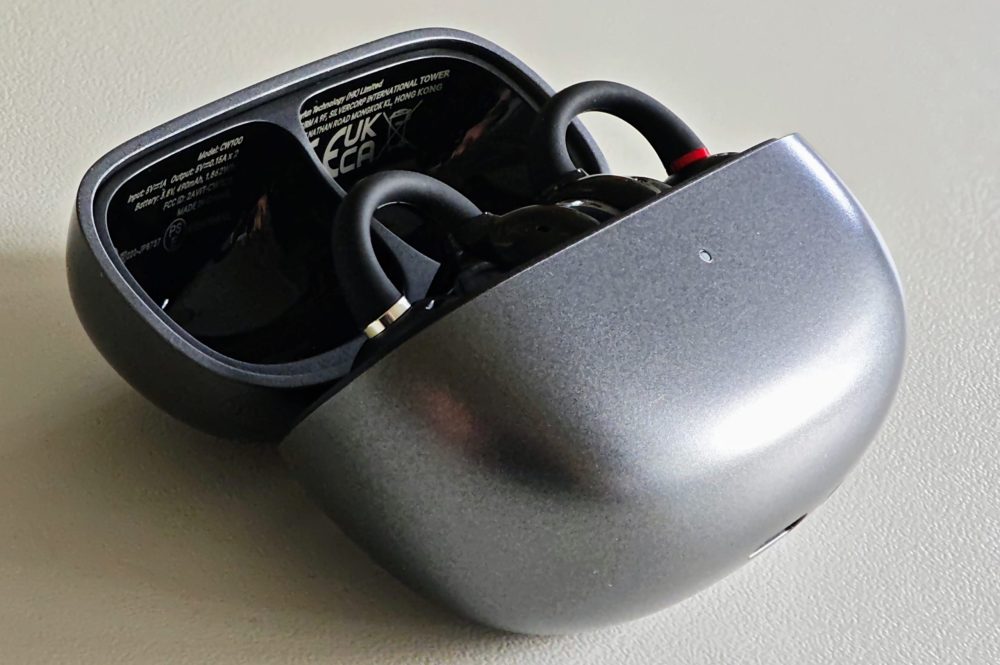
The charging case features a compact and streamlined design (66 mm x 48.3 mm x 28 mm), secure lid closure, and magnetic retention for the headphones. A USB-C port and pairing button are located on the bottom.
Battery life and charging

Our previous experiences with EarFun headphones indicate exceptional battery performance. The EarFun Clip continues this trend, delivering impressive battery life. The manufacturer specifies 10 hours of playtime on a single charge, with an additional 30 hours provided by the charging case. Our testing corroborates these claims.
A 10-minute charge in the case yields 2.5 hours of additional playtime. A full charge of the headphones requires 1 hour, while the case takes 2 hours to charge completely.
Sound quality and software
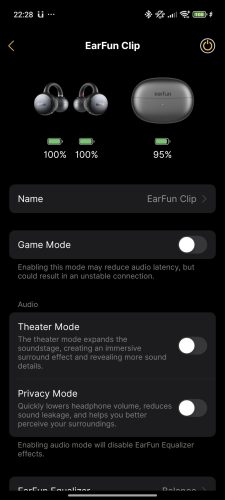
In contrast to our positive sonic experience with the Huawei FreeArc, the initial sound quality of the EarFun Clip was somewhat underwhelming. The sound profile presented as flat, lacking depth and generally uninspired, with noticeable deficiencies in both bass and treble frequencies.
Fortunately, EarFun’s companion application proves to be a valuable asset. Its integrated 10-band equalizer allows for significant sound customization. Adjusting the equalizer to boost bass and treble frequencies noticeably enhances the audio experience, resulting in a more engaging and cleaner sound. While a deep bass response remains elusive, this limitation is inherent to the open-ear design, which inherently differs from the bass reproduction capabilities of in-ear headphones.

The application’s personalized audio calibration tool is particularly effective. This feature allows users to identify audible frequencies, generating a customized audio profile tailored to their specific hearing characteristics.
While Chains & Whips by Clipse may not achieve optimal reproduction, Fare Thee Well, Miss Carousel by Townes Van Zandt exhibits excellent sound quality.
EarFun includes a “BassSurge” mode, but even with this feature enabled, the bass response remains somewhat weak. However, the headphones perform adequately for podcasts, acoustic music, and other genres that are less demanding in terms of bass.
The EarFun Clip incorporates Bluetooth 6.0 and supports AAC, SBC, and LDAC codecs. While the inclusion of LDAC may seem somewhat excessive for this type of headphone, its availability is a welcome addition.

The companion app offers comprehensive control over headphone functionality. Users can customize button assignments (as illustrated above), manage multipoint connections, activate a low-latency gaming mode, and access other features.
As with many other headphones, the LDAC codec and multipoint connectivity are mutually exclusive; users must choose between these two features.
Call quality is acceptable for brief conversations. The dual microphones, coupled with AI-powered noise filtering, effectively isolate the user’s voice. However, performance degrades in windy or noisy environments.
Conclusion
The EarFun Clip is typically priced around 675 SEK (approximately $69 USD), but can often be found for approximately 510 SEK (approximately $53 USD). At this price point, the EarFun Clip offers a training-focused headphone with a secure fit (for most users), extended battery life, a feature-rich application, and respectable sound quality (following equalization), with the primary caveat being a limited bass response.
These are not audiophile-grade headphones intended for critical listening to Pink Floyd in a dedicated listening space. Rather, they are designed as training headphones that remain securely in place during physical activity and provide awareness of surrounding sounds, such as approaching cyclists.
While alternative options may offer superior sound quality, longer battery life, or other advantages, they often come at a significantly higher cost, potentially doubling (Huawei FreeArc) or quadrupling (Shokz OpenFit 2+) the price.
EarFun provided review samples for this evaluation. The provision of review materials does not influence our editorial independence. Our reviews are conducted independently, with a focus on the needs of our readers and consumers.
